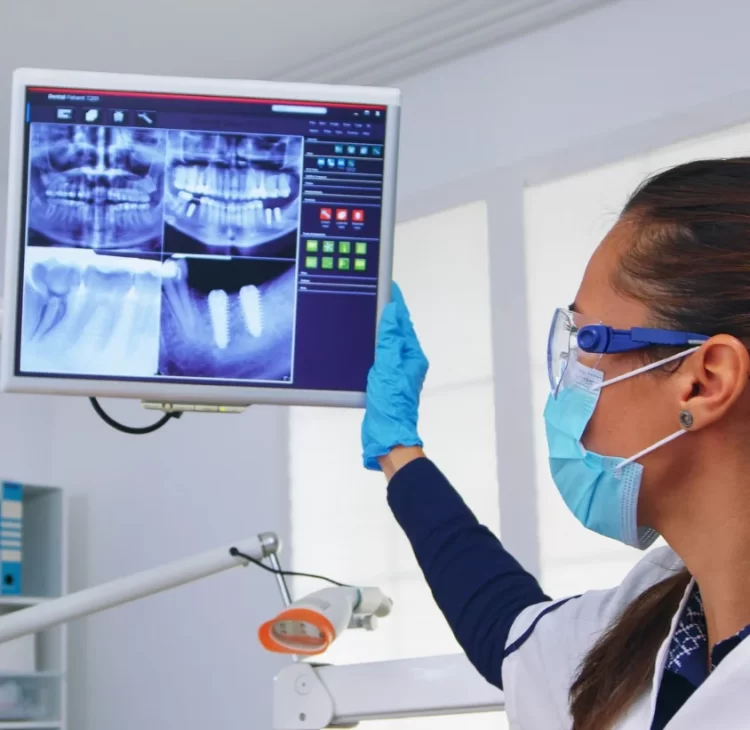DENTAL CLEANING
What is a Dental Cleaning ?
Dental cleaning is crucial for maintaining optimal oral health. During the procedure, a dentist or hygienist removes tartar, bacterial plaque, and surface stains from both above and below the gum line. Even with regular brushing, certain areas can be missed, allowing harmful bacteria to build up and form tartar, which can lead to gum disease. If not addressed, this can progress to more severe conditions like periodontitis, potentially causing tooth loss. Regular dental cleanings, usually recommended every 3 months to once a year, are essential for your overall health, as untreated gum disease can increase the risk of heart disease and stroke. Additionally, your teeth will appear noticeably whiter after the cleaning, especially if stains from coffee, tea, or smoking are present.
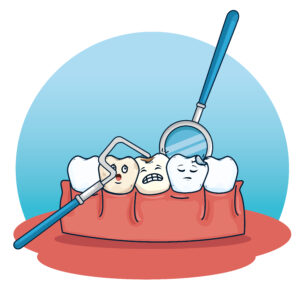
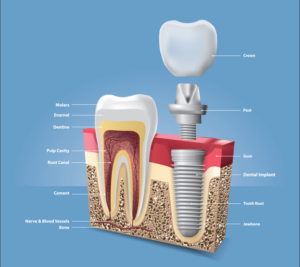
DENTAL IMPLANTS
What is a Dental Implant?
A dental implant is a titanium post placed into the jawbone to replace a missing tooth. It fuses with the bone, providing a stable foundation for a crown, bridge, or denture. Implants restore both the function and appearance of missing teeth, offering a long-lasting solution compared to dentures or bridges. They prevent surrounding teeth from shifting, helping to maintain alignment. Additionally, implants stimulate the jawbone, preventing bone loss and preserving facial structure. With high success rates, dental implants are the most reliable choice for tooth replacement.
INVISALIGN TREATMENT
What is Invisalign & How Does it Work?
Invisalign is a modern teeth-straightening treatment that uses clear aligner trays custom-made to fit your teeth. Unlike traditional metal braces, Invisalign trays are removable, allowing you to take them out before eating or drinking. The treatment involves a series of aligners that gradually shift your teeth into the desired position. Your dentist will take impressions of your teeth to create the aligners, and you’ll receive new trays periodically to continue the progress.
How Long Does Invisalign Take?
Treatment time varies depending on the individual’s needs, such as how much movement is required. A consultation with your dentist is necessary to determine if Invisalign is suitable for you.
Is Invisalign Suitable for All Ages?
Invisalign can be used by patients of all ages, as long as the permanent adult teeth have come in.
Contact us today to schedule your consultation and begin your journey to a beautiful smile!
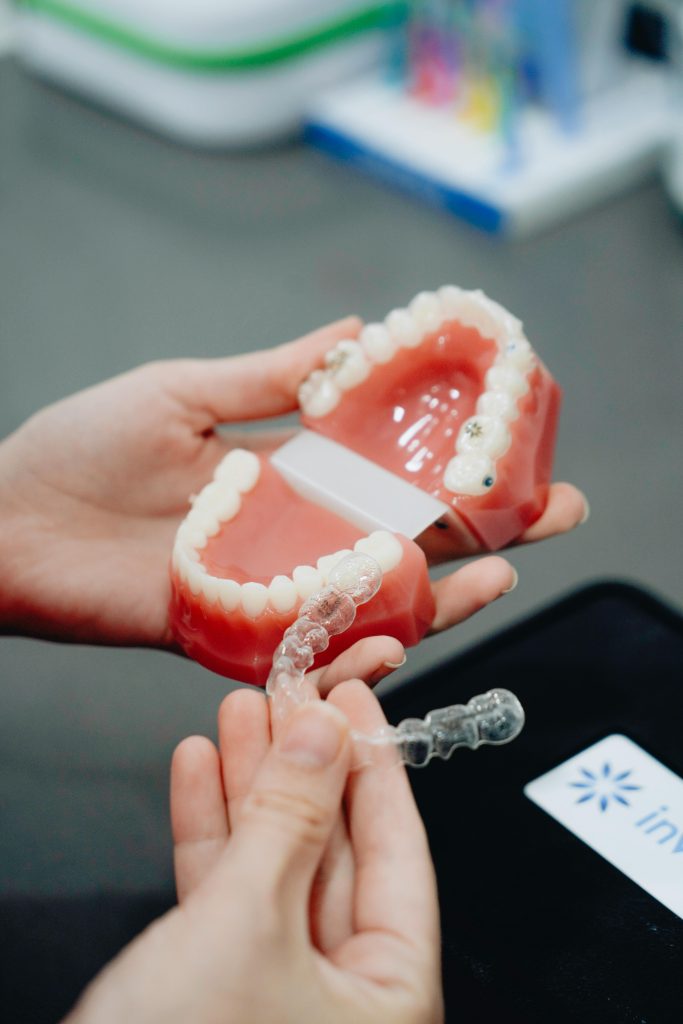
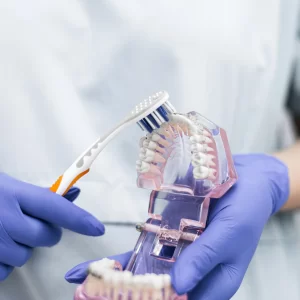
TEETH WHITENING
What Causes Teeth Stains?
Teeth stains can be internal, caused during tooth development, or external, resulting from food, drinks, smoking, or poor oral hygiene. External stains are usually easier to treat with whitening toothpaste, over-the-counter products, or professional whitening treatments. Internal stains, which are deeper in the tooth structure, may require cosmetic procedures like veneers. While over-the-counter treatments are less potent, professional whitening offers faster and more noticeable results. Most patients see significant improvement after one session, and a dental cleaning beforehand can help achieve better whitening outcomes by removing plaque and tartar.
DENTAL FILLINGS
Do You Need a Dental Filling?
Dark or brown spots on your teeth, especially with sensitivity or pain, may indicate dental decay requiring a filling.
Types of Fillings
Composite (white) fillings are commonly used for aesthetic purposes, especially on front teeth, while metal (silver) fillings are typically used on back teeth due to stronger biting pressure. However, advances in material technology allow white fillings to be used in the back teeth as well.
Filling Procedure
Before the procedure, an x-ray may be taken to assess the extent of decay. After applying local anesthesia, the dentist cleans the decayed area and fills it with a material that matches your natural tooth color. The filling is then shaped and hardened using a special curing light. Most fillings are completed in one visit. While minor fillings cause little discomfort, larger ones may lead to temporary sensitivity, which will subside over time.
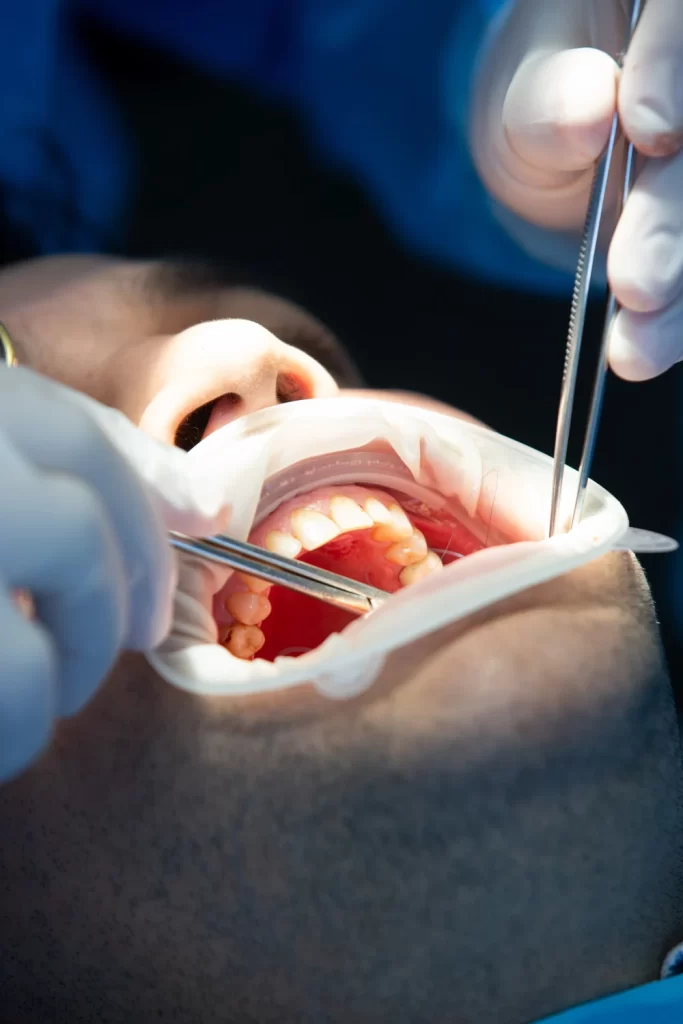
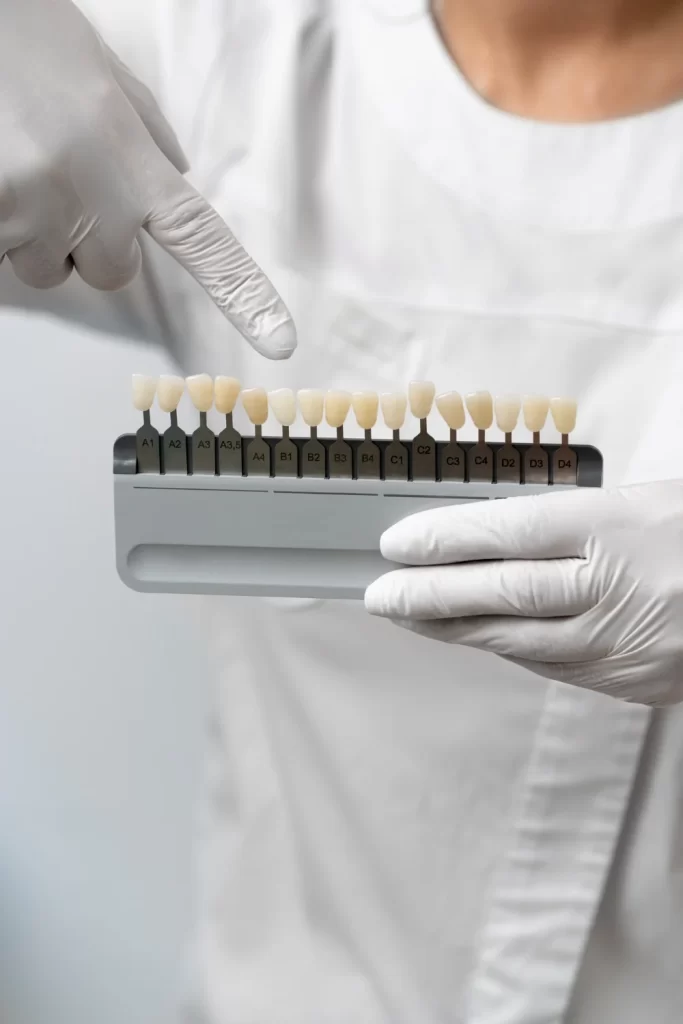
DENTAL CROWNS
Why Do You Need a Dental Crown?
A dental crown is often recommended to repair a tooth that has lost a large portion of its natural structure.
Dental Crown or Filling?
A dental filling is ideal for small to medium cavities, but for large cavities, a filling may not be strong enough to withstand the forces from chewing and biting. In such cases, a dental crown is the better option, as it can handle the pressure and restore the tooth's strength. If a large filling is showing signs of failure, your dentist may suggest replacing it with a crown.
What to Expect?
Your dentist will take an x-ray to assess the damage, then shape the tooth to prepare for the crown. After taking an impression, a custom crown will be made to match the shape and color of your natural teeth. A temporary crown is placed until the permanent one is ready, and once it’s ready, the temporary crown is replaced with the permanent one.
DENTAL BRIDGE
What Is a Dental Bridge and Why Choose It?
A dental bridge is a fixed prosthesis used to fill gaps left by missing teeth, secured by natural teeth or dental implants. It's a popular option for replacing teeth, balancing cost and function, and can last 5-7 years or more with proper care.
What Is the Procedure Like?
To prepare for a dental bridge, your dentist will file down the adjacent teeth to allow space for the bridge. An impression is then taken to create a custom-fitted bridge. A temporary bridge may be placed until the permanent one is ready, after which it will be cemented in place. Special flossing tools are needed to maintain the bridge due to its design, so consult your dentist for the best cleaning tools.
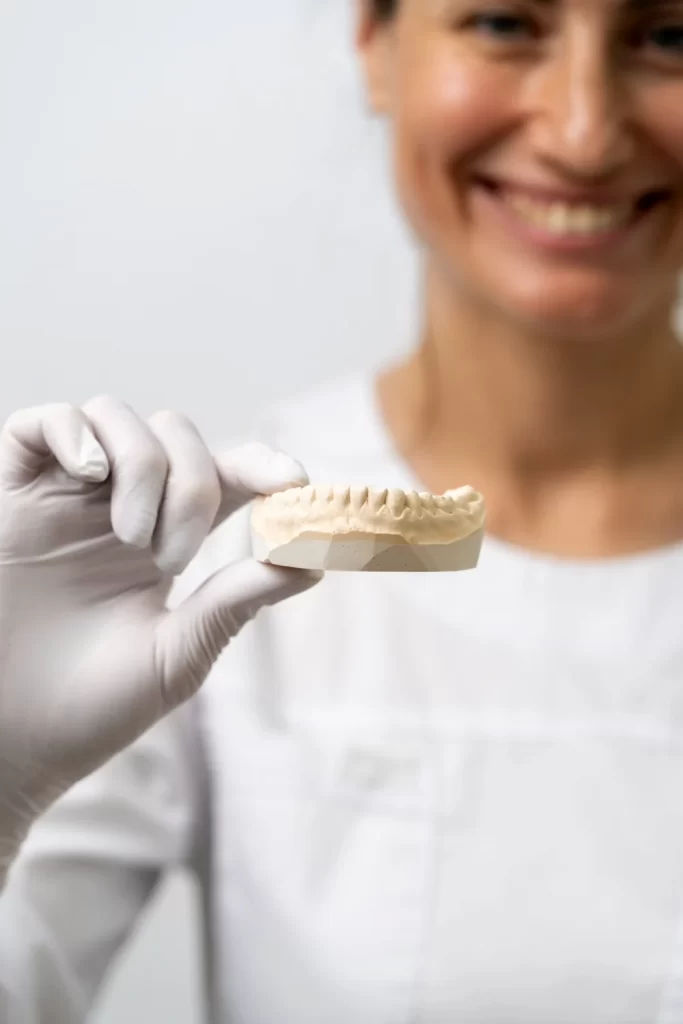
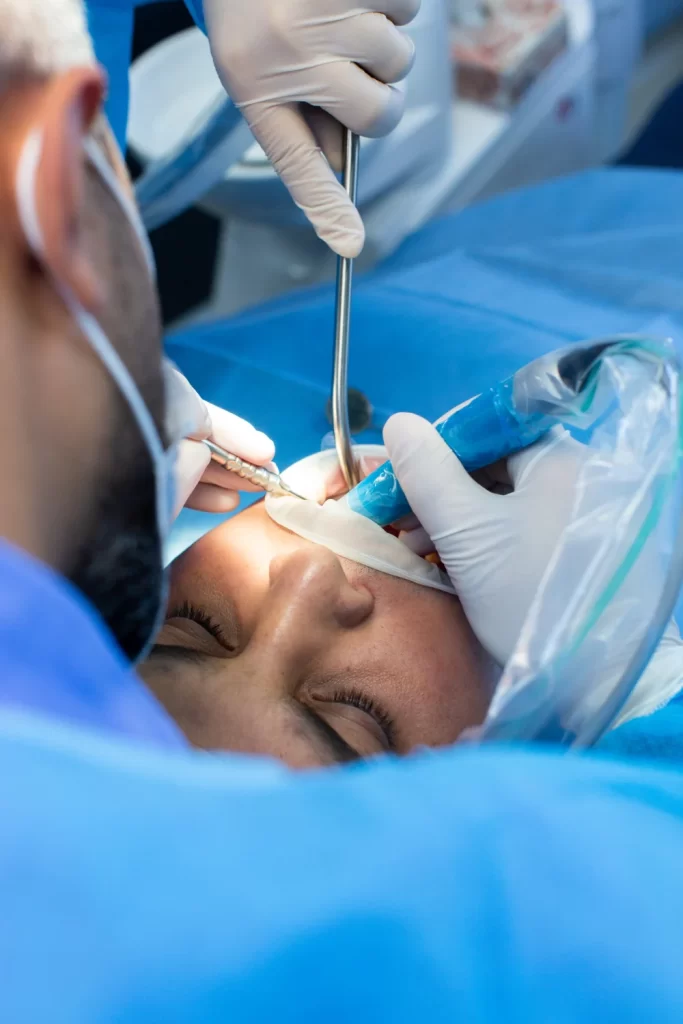
ROOT CANAL TREATMENT
What is Root Canal Treatment?
Root canal treatment is needed when the tooth’s inner pulp is damaged or infected, often due to cracks, broken teeth, or cavities.
Signs You Need a Root Canal
- Pain while eating
- Bumps or pimples on the gums
- Sensitivity to hot or cold Swollen or tender gums
TOOTH EXTRACTION
When and Why Are They Needed?
Neglecting dental health can lead to severe issues like decay, gum disease, and tooth loss. When a tooth becomes untreatable, extraction may be necessary.
What Is Tooth Extraction?
Tooth extraction involves removing a damaged or decayed tooth. The procedure is done under local anesthesia, making it painless. It is recommended when other treatments like fillings or root canals aren’t viable.
Common Reasons for Tooth Extraction:
- Severe Decay: Advanced cavities that damage the inner tooth layers.
- Broken or Fractured Teeth: If a tooth is too damaged to be restored.
- Gum Disease: Infection or mobility that affects nearby teeth.
- Wisdom Teeth Issues: Misaligned or impacted wisdom teeth causing pain.
- Infection Risk: Removing a tooth to prevent spreading infection.
- Overcrowding: Creating space for orthodontic treatments like braces.
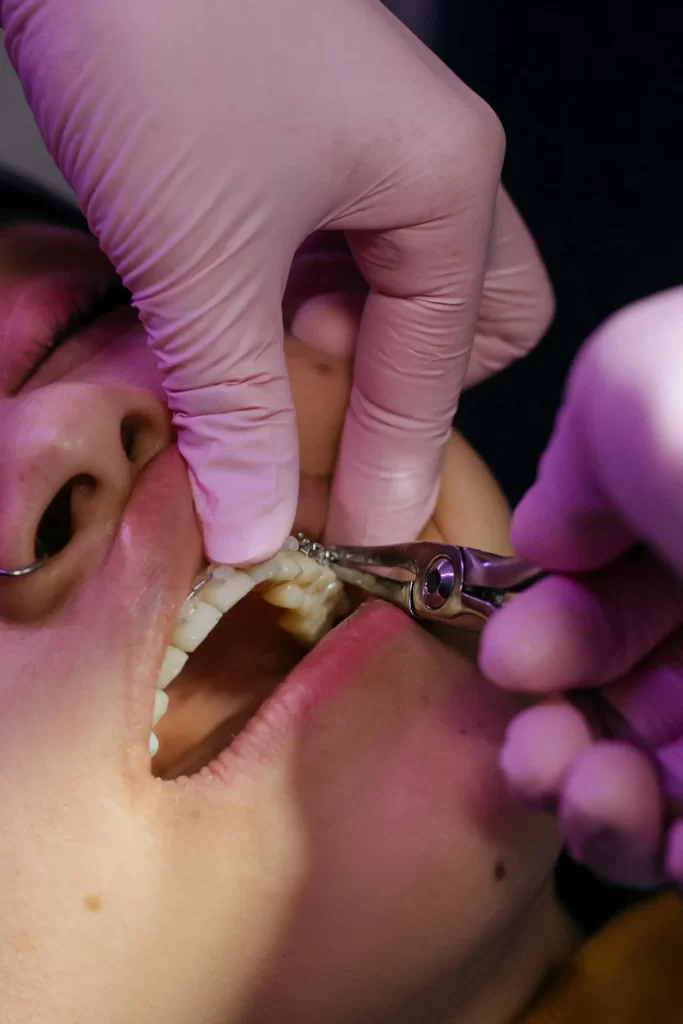

COSMETIC DENTISTRY
Want a Better Smile? Cosmetic Dentistry Can Help!
If you feel self-conscious about your smile, cosmetic dentistry offers solutions to enhance its appearance.
How Can Cosmetic Dentistry Help?
- Teeth Whitening: Brightens discolored or stained teeth.
- Orthodontics: Straightens misaligned teeth using braces or Invisalign.
- Veneers & Bonding: Fixes deep stains, reshapes, and improves teeth color.
- Gum Contouring: Reduces excess gum tissue for a balanced smile.
- White Fillings: Replaces old metal fillings for a natural look.
CBCT Scan
How Does a CBCT Scan Improve Dental Diagnosis?
Cone Beam Computed Tomography (CBCT) is an advanced dental imaging technology that provides detailed 3D images of your teeth, bones, nerves, and soft tissues in a single scan. It offers a more comprehensive view than regular X-rays, improving diagnosis and treatment planning.
How to Prepare:
- Inform your doctor if you might be pregnant.
- Wear loose, comfortable clothing.
- Avoid jewelry; you may need to wear a gown.
